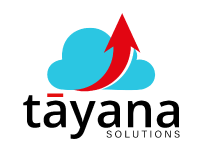Comparing Acumatica vs Everest
Everest is a complete ERP system for businesses of all sizes, helping retailers, manufacturers, and distributors automate key business processes and streamline their operations. As a modular solution, Everest can be installed quickly and easily to support various business functions such as Web Store, Inventory Management, Sales Order Processing, Finance and Accounting, and other related areas.
Everest has an outdated technology that renders it unable to compete in today’s cloud service market.
Here’s how Everest compares to Acumatica:
| Functionality | Acumatica | Everest ERP |
|---|---|---|
| True cloud (built for cloud) | ||
| True mobility (supports all devices with no special apps) | ||
| Built using modern technology | ||
| Full function ERP | ||
| Modern APIs for integration | ||
| Customization using industry standard tools | ||
| Upgrade on your schedule | ||
| Flexible licensing options based on customer requirements | ||
| Multiple deployment options (cloud, on-premises, hybrid) | ||
| Scale as you grow | ||
| Lower Total Cost of Ownership (TCO) |
There are several significant differentiators between Acumatica and Everest ERP.
True Cloud: True cloud” refers to using the internet using a standard browser without additional software installation on the user’s device or additional software licensing. Acumatica can be deployed either on-premises or in the cloud without any additional equipment or software. Everest requires a Windows client on every workstation.
True mobility: Acumatica offers a true mobile-first cloud ERP. Acumatica is built to size and format every screen and page perfectly to fit any device without sacrificing information and ease of use.
Built using modern technology: Acumatica, built for the cloud using modern computer architectures and software languages, is better than Everest, which leverages older computer architectures and software languages from the 1990s.
Customizations using industry-standard tools: Acumatica is highly configurable with C# and. NET. Everest can be customized with C# and .NET, but users are limited in what they can customize in the product.
Flexible licensing options: Both products are available through subscription licensing, but Acumatica offers both a subscription licensing model and a subscription per-user model for its products.
Multiple deployment options (cloud, on-premises, hybrid): While both products are available on-premises and hybrid, Acumatica also supports true cloud deployments.
Multiple deployment options (cloud, on-premises, hybrid): Both can be installed on-premises or in the cloud. Acumatica Cloud is 100% cloud-based, so you can access your information when you need it — from any internet-connected handheld or device.
TCO: Acumatica offers consumption-based pricing, which is based on how much you use our software. We also offer more deployment options to fit your company’s needs. As a result, Acumatica’s TCO (Total Cost of Ownership) is lowered substantially.
Wondering How We Work?
About Everest
Since its inception in 1994, Everest has been a leading ERP provider. As a full-function system, it has an inherent ability to generate high-volume eCommerce e-commerce capability. Everest was built in the late 90s and used older architecture. It requires the installation of a client on every workstation that accesses the system. Everest’s architecture is based on Delphi and DCOM, which has become outdated. It offers no REST APIs or mobile solutions.
Acumatica was built for modern business cloud computing. Our multi-tenant platform offers flexibility to use both hosted and on-premises options, providing data in real-time to any device, with no extra costly infrastructure.
The Acumatica ERP solution is designed specifically for small- and mid-sized businesses. During the years of our experience, we have to understand what it takes to be successful in this sector. Our solution delivers on all the factors that are essential to success.
Make sure you take some time to review ERP System Comparison to help you find the solution that is right for you.
